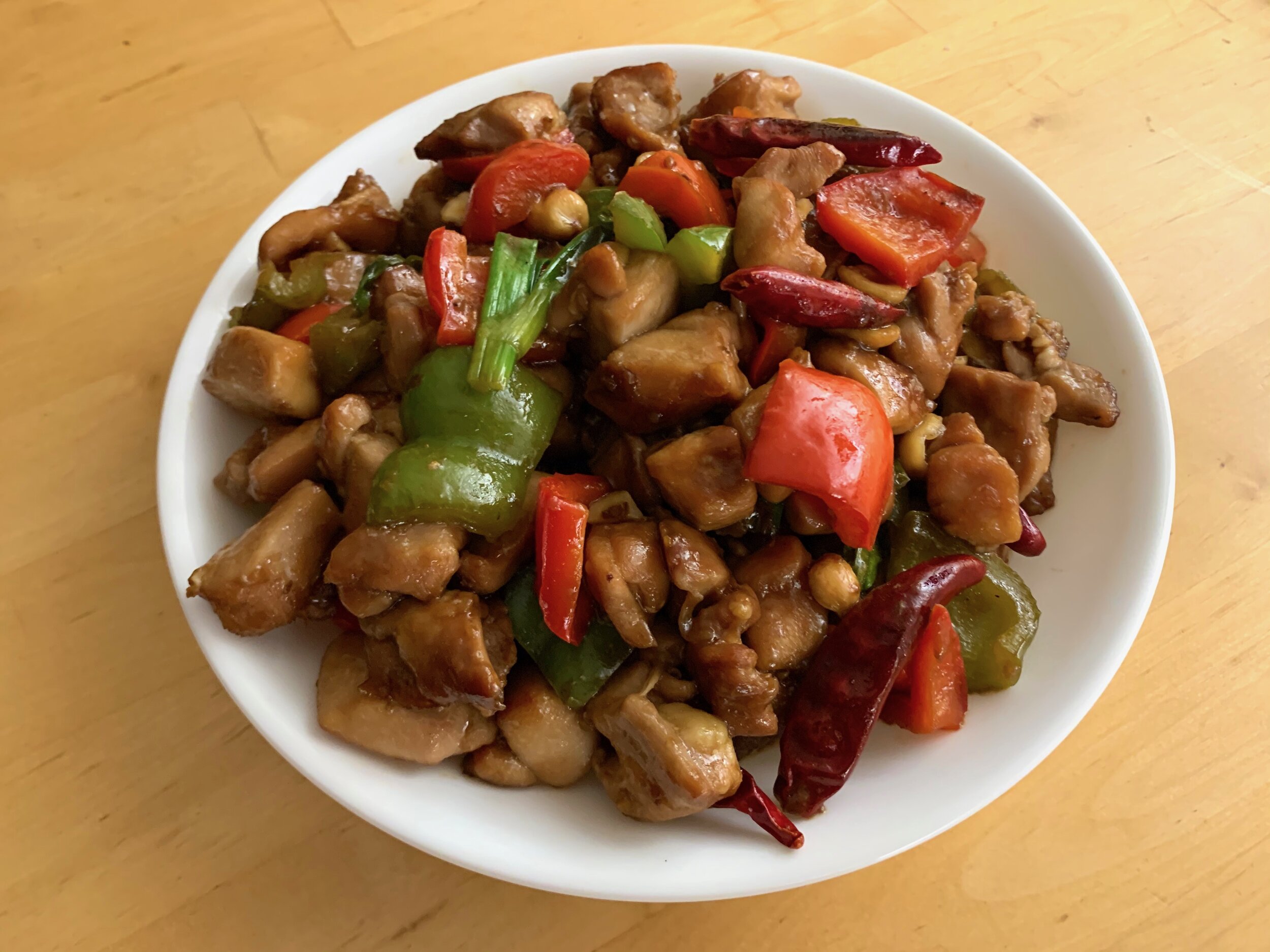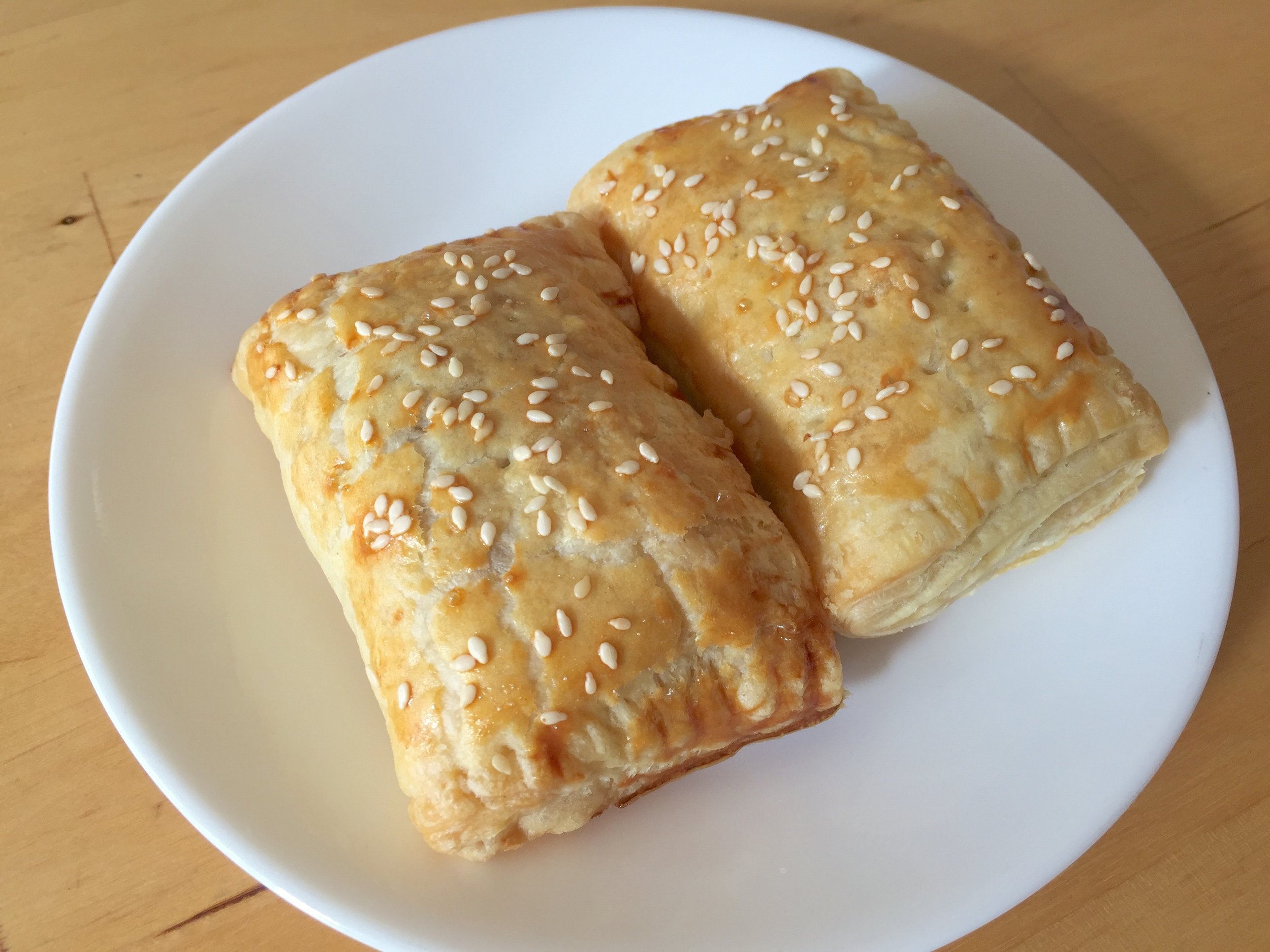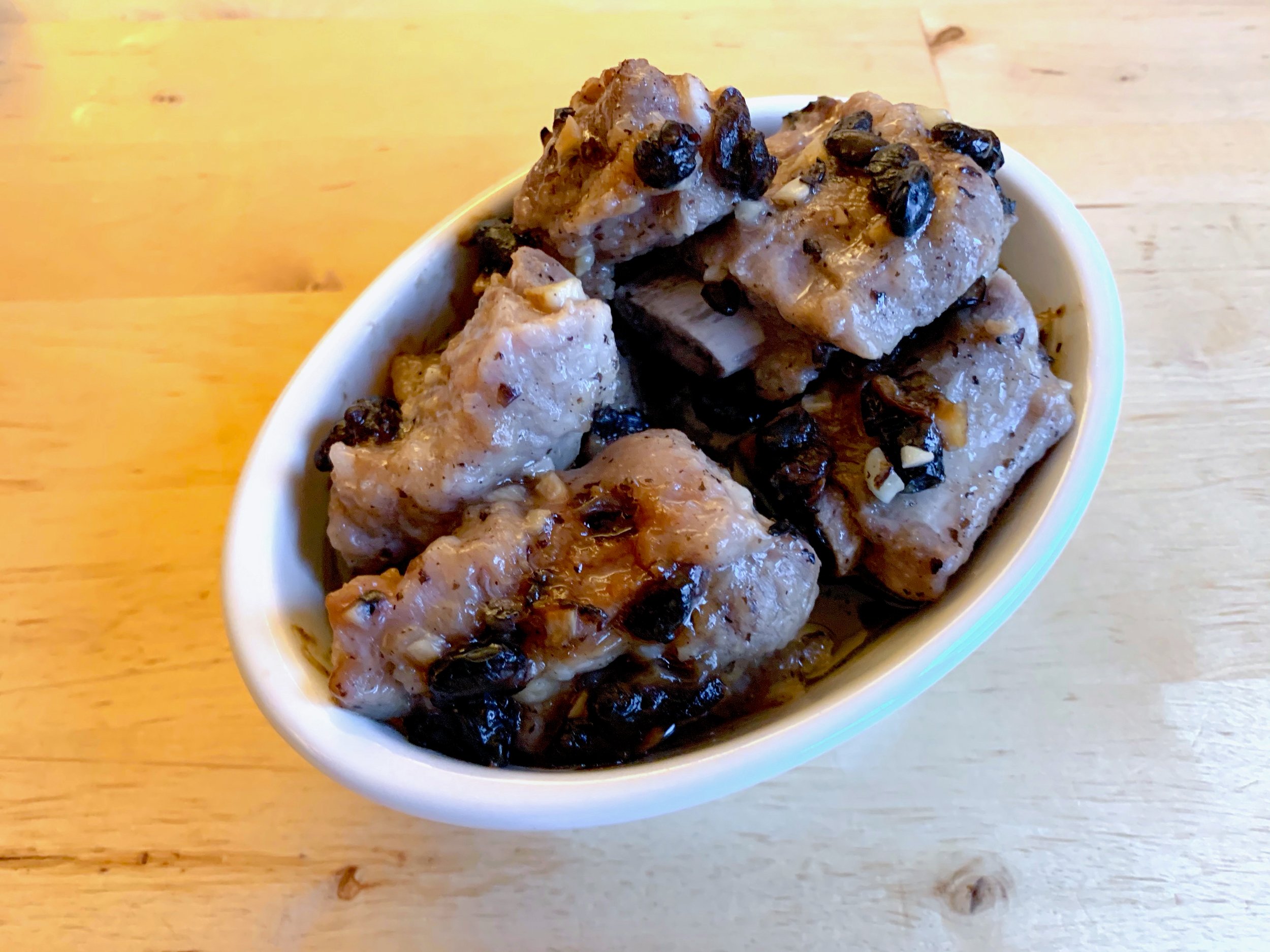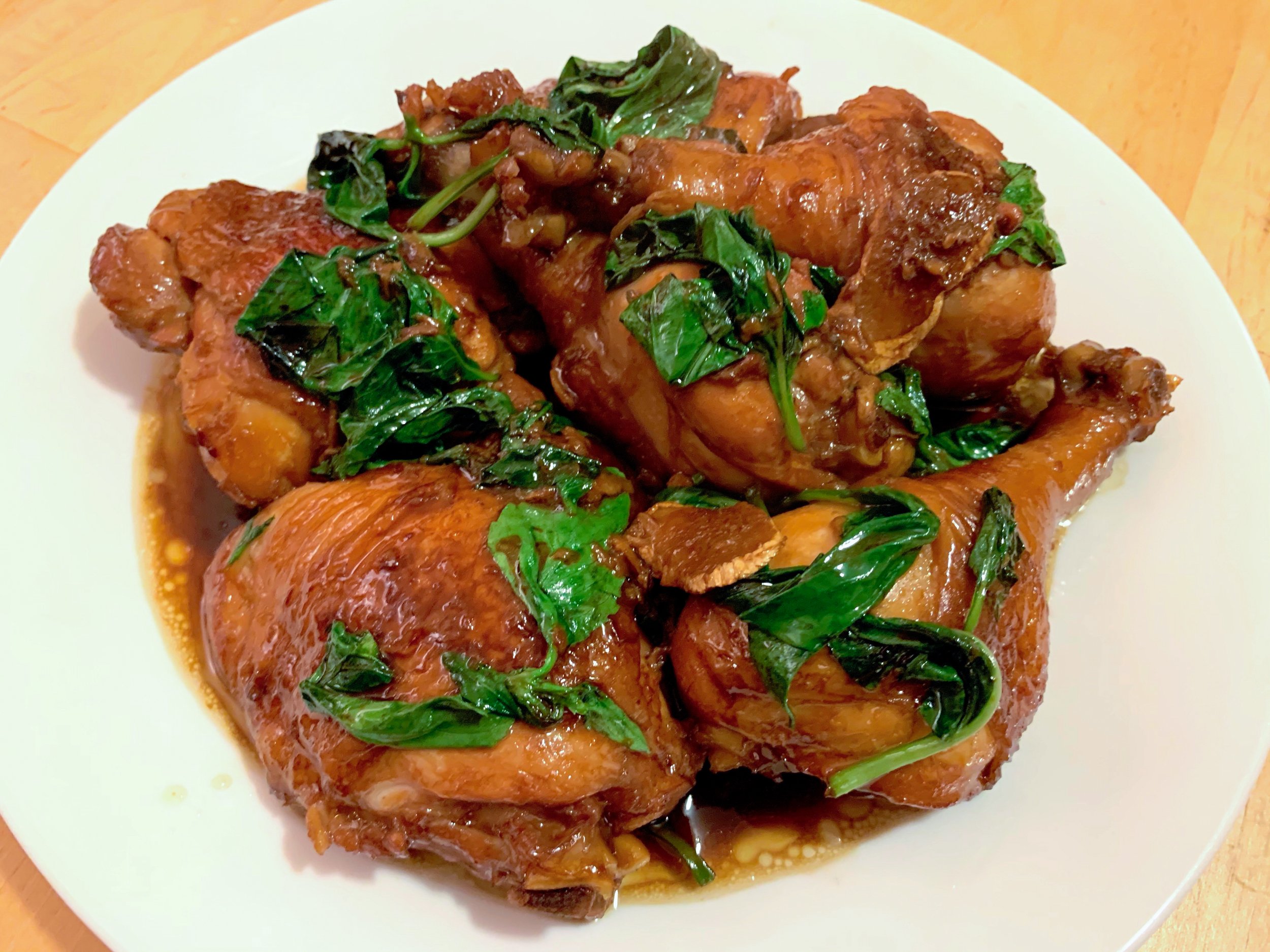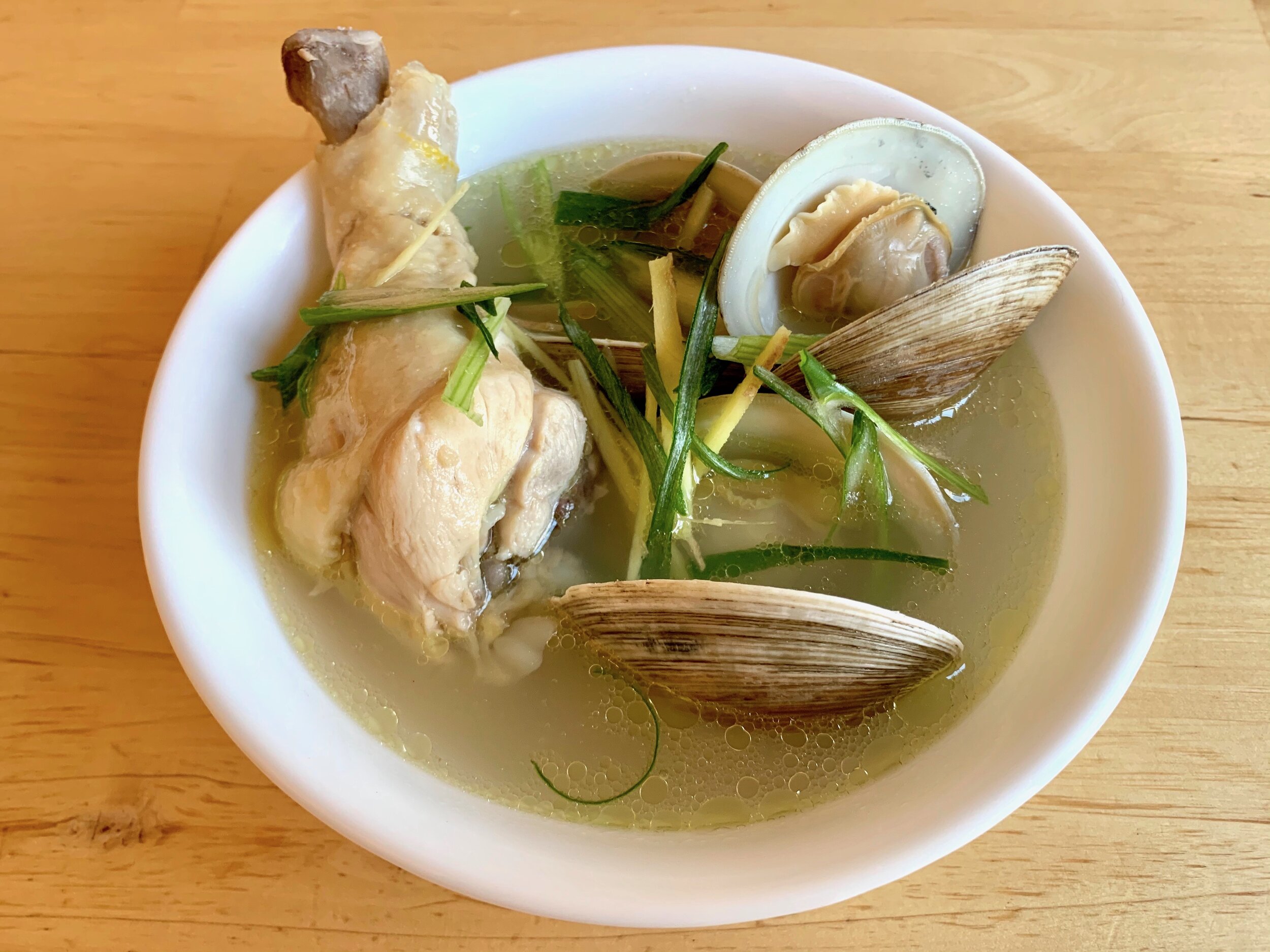Chicken Curry Puffs

咖哩角 (Karipap)
Chicken curry puffs are a savory pastry commonly found on dim sum carts and in Asian bakeries. While the exact origins of the pastry are unknown, it likely originated in British Malaya—the region of the Malay Peninsula administered by the British Empire through much of the 19th and 20th centuries and that today form the nations of Malaysia and Singapore [1]. The region is home to many immigrant communities, and the chicken curry puff has been influenced by the British Cornish pasty and Indian samosa, with the spiced filling influenced by Chinese and Japanese interpretations of curried stews. There exist many variants on the curry puff in Southeast Asia, with different doughs and fillings. This recipe is based on a Malaysian Chinese version using puff pastry, which has become common in Chinese American bakeries. We will use storebought puff pastry sheets [2], and you can use either storebought or homemade curry roux.
Ingredients
For the Filling
1 onion, finely diced
3 cloves garlic, minced
1 lb ground chicken thigh
2 oz Japanese curry roux
1 tsp vegetable oil
Salt to taste
White pepper to taste
For the Pastry
2 sheets puff pastry
1 egg
To make the filling, first heat 1 tsp vegetable oil in a pan or skillet over medium heat. When the pan is up to heat, add the finely diced onions and minced garlic to the pan. Cook for 5 minutes, stirring occasionally, or until the onions have softened and have turned translucent. Then add the ground chicken thigh to the pan, and use a spatula to thoroughly break up the meat.
Add the curry roux to the pan, which will combine with the moisture released by the onions and chicken to form the sauce. Cook the filling, stirring occasionally, for about 5 minutes, or until the chicken is fully cooked. We are looking for a thick consistency, thicker than a curry stew would normally have, so that the filling will remain structurally stable in the pastry. If the filling looks too thick, add a tablespoon or two of water. If it is too thin, use a cornstarch slurry to thicken it.
Remove the filling from the heat and chill in the refrigerator until cool (at least 30 minutes) before folding the pastries. Placing a warm filling in pastry can melt the butter in the pastry, destroying the laminated layers and preventing the pastry from rising.
When you are ready to fill and bake, preheat the oven to 400° F, and line a sheet pan with tinfoil. Roll the puff pastry out to about ¼ inch thick, and cut it into 3 inch by 3 inch rectangles. Place the pastry rectangles on the sheet pan and place about 2 tablespoons of chilled filling in the center of each piece of dough. Fold each pastry closed in a triangle shape, and crimp it closed with the tines of a fork. Using the fork, dock the top of the pastry several times, so steam can escape when it’s in the oven.
Beat the egg to form an egg wash, and brush the tops of each pastry with the egg, which will give the pastry its shine. Bake at 400° F for 20-25 minutes, or until the pastries are puffed and golden brown. Let rest for 5 minutes before serving.
Substitutions
I do not recommend substituting ground chicken breast for chicken thigh in this recipe—if the meat is too lean the filling will become dry. If desired, substitute ground pork or beef for the ground chicken. However, note that using beef in particular will significantly the flavor profile of the pastry. If you want to make a vegetarian version, you can use diced and sauteed potatoes and carrots. If you want to top the pastries with sesame seeds, sprinkle them on after applying the egg wash.
[1] The British first looked to expand their influence over Southeast Asia and the Straits of Malacca in the wake of the Napoleonic Wars. The modern city of Singapore was founded by the British in 1819, and in the century that followed British influence and control spread to encompass much of the Malay Peninsula. Malaya’s tin and rubber resources made it a strategic target during the Second World War—the Japanese invaded Malaya the same day the attacks on Pearl Harbor and the Philippines were launched. The peninsula was held by the Japanese until the end of the war in 1945. The Federation of Malaya achieved independence in 1957, and the former crown colony of Singapore was granted full self-governance in 1959. The story doesn’t quite end there. In 1963, the states of Malaya, Singapore, North Borneo, and Sarawak agreed to form a single federal government, establishing the modern country of Malaysia. However, Singapore was expelled from Malaysia in 1965, after a series of socioeconomic and racial tensions. This makes Singapore the only extant country to have gained its independence against the will of its contemporary government.
[2] Traditional Chinese puff pastry dough is somewhat different from French-style laminated puff pastry dough. Instead of butter, Chinese pastry uses lard, and consists of layers of two different types of dough—a tougher hot water dough and a flaky short dough.
Recipe
Prep Time: 10 min Cook Time: 30 min Total Time: 1 hr 10 min
(+30 min inactive)
Difficulty: 2/5
Heat Sources: 1 burner, oven
Equipment: pan, sheet pan, basting brush
Servings: 18 pastries
Ingredients
For the Filling
1 onion, finely diced
3 cloves garlic, minced
1 lb ground chicken thigh
2 oz Japanese curry roux
1 tsp vegetable oil
Salt to taste
White pepper to taste
For the Pastry
2 sheets puff pastry
1 egg
Instructions
1. Heat the vegetable oil in the pan over medium heat. Add the diced onions and garlic and cook for 5 minutes, stirring occasionally, or until the onions soften and turn translucent.
2. Add the ground chicken to the pan and thoroughly break it up. Then add the curry roux and cook for 5 minutes, or until the chicken is fully cooked and the filling has thickened. If the filling is too thick, add a tablespoon or two of water. If it is too thin, thicken it with a cornstarch slurry.
3. Season the filling to taste with salt and white pepper, then remove the filling from the heat and chill in the refrigerator until cool, at least 30 minutes.
4. Preheat the oven to 400° F, and line a sheet pan with tinfoil or parchment paper.
5. Roll the puff pastry to about ¼ in thick, and cut into about 3 x 3 in squares. Place 3 tbsp of chilled filling onto each piece of dough, folding each pastry closed in a triangle. Crimp the pastry with a fork, and dock the top of the pastry so steam can escape.
6. Beat the egg to make an egg wash, and brush the tops of each pastry with the egg.
7. Bake at 400° F for 20-25 minutes, until golden brown. Let rest for 5 minutes before serving.

















